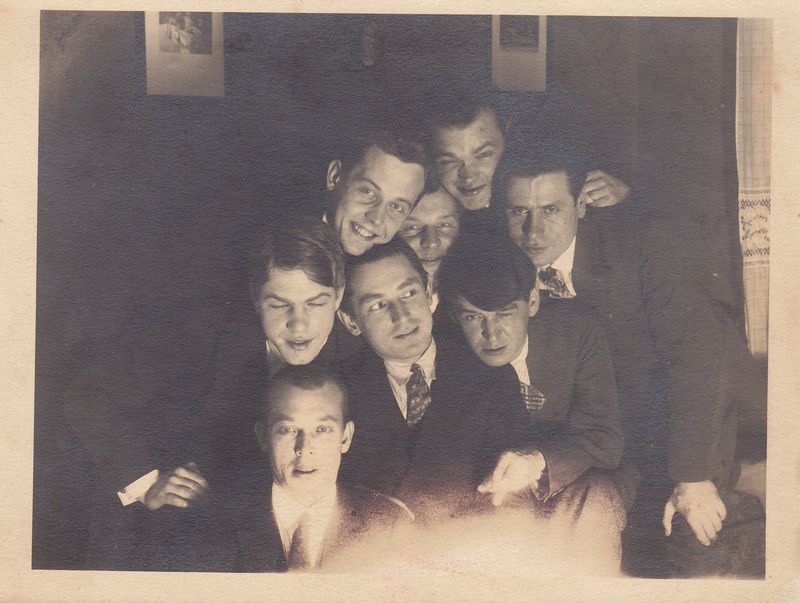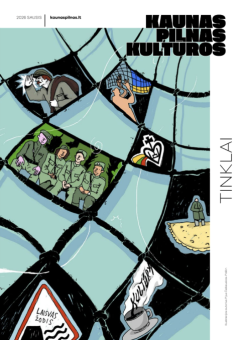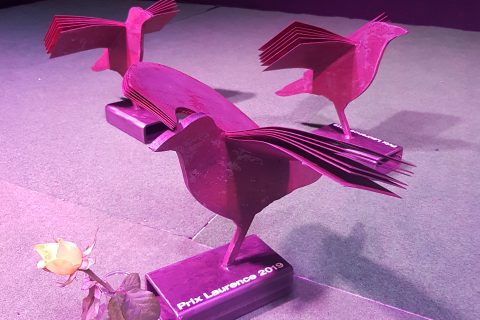The homes of many authors in Kaunas often were not only personal and creative spaces but places of formal and informal gatherings. Various societies formed and developed their activities there, periodicals were born, and plays took on a live form. Literary news was exchanged in the apartments and villas, and the authors introduced each other to their or somebody else’s latest work. As the representatives of the literary world also had more social roles, various organizations settled and gathered in their homes.

The homes of many authors in Kaunas often were not only personal and creative spaces but places of formal and informal gatherings. Various societies formed and developed their activities there, periodicals were born, and plays took on a live form. Literary news was exchanged in the apartments and villas, and the authors introduced each other to their or somebody else’s latest work. As the representatives of the literary world also had more social roles, various organizations settled and gathered in their homes.
The homes of writers, whose creative roots extended to the period of the press ban were important places of culture. In the early years of independence, various meetings were held at the houses of Maironis, Adomas Jakštas and Juozas Tumas-Vaižgantas. Vaižgantas’ apartment on Aleksoto Street stood out socially, as the meeting point of many important organizations. In 1921, the Society for Making Lithuania Beautiful settled and started gathering there. It aimed at making the country’s environment more aesthetic, it was the first to campaign for systematic urban planning in the country, and later become especially famous for tree planting festivals. And this is only one case of the active service of Vaižgantas and his housing for public activities. For example, in January 1932, a gathering took place in his apartment, the aim of which was to restore the Lithuanian-Swedish Society, which promoted cultural cooperation between the two countries. Both organizations were chaired by Vaižgantas. He also presided in The Lithuanian Writers and Journalists’ Union, which was founded on the last day of January in 1922; the members of the union frequently visited the public activist’s apartment. It is also worth mentioning that during the last decade of the 20th century this flat was inhabited by another priest of Vytautas Church and a representative of the much later literary generation of the city – Ričardas Mikutavičius.
Some buildings no longer exist, some have forgotten their inhabitants and the events surrounding them, others are decorated with commemorative plaques.
In the 1930s, the so-called salon culture gradually developed in the city. Right from 1926, Sofija Kymantaitė-Čiurlionienė’s salon (in 1932 it moved to a newly built house on the slope of Žemaičių Street) was famous for “literary Saturday”s, where philologists and representatives of literary scenes and other fields of culture met regularly. The idea of such Saturdays was born in the early years of independence, seeing what poor condition the Lithuanian language was in at that time. These gatherings eventually became an important impetus for raising the quality of both the language and the translations. The creation of new words was an attempt to patch up the development of the language that had stalled for many years due to the press ban. There were simply no Lithuanian equivalents for many words until then. New and original works of the guests were an important part of these evenings. Active visitors were writers V. Mykolaitis-Putinas, Mykolas Vaitkus, Benediktas Rutkūnas, translator Jurgis Talmantas, linguists Antanas Salys, Petras Jonikas and others. The house played an even more important role during the Second World War when the family hid the persecuted Jews at home.
Gatherings that started in 1924 and later grew into the official Šatrija Catholic youth art organization, took place at V. Mykolaitis-Putinas, on Maironios Street (other sources indicate Mickevičiaus Street). People who gathered read their works – short stories and poems – that were later analyzed. According to the visitors, the gatherings always ended with music and Putinas always organized a hearty feast at his own expense. Many writers that had left an important mark in the literary history of the country and had also studied at the country’s university – Bernardas Brazdžionis, Petronėlė Orintaitė, Juozai Grušas, Keliuotis and Brazaitis and then the younger generation: Alfonsas Nyka-Niliūnas, Kazys Bradūnas and others – were members of Šatrija founded in 1927.
Putinas lived in different parts of Kaunas, including the luxurious house of Juozas Purickis on Vaižganto Street. Next to it stands an equally splendid apartment building of the priest, writer and public activist Antanas Šmulkštys. The neighbour became a prototype of Stripaitis in the In the Shadow of Altars novel, which he did not like very much. And later, Šmulkštys’ own ambitious project was born in this house – an attempt to create a national epic Reflection of Fairy tales.
It is not surprising that the home of one of the biggest “bohemians” in Kaunas, a herald of avant-garde, Kazys Binkis, was also famous for gatherings. The avant-garde gatherings began in his apartment in 1920 (currently, in its place on Maironio Street stands a house marked with number 33) and slowly they developed into the Four Winds group. Almost every Monday Binkis hosted “Monday gatherings.” The guests would learn not only about the works of foreign authors but also about folk writings. Among regular visitors were Faustas Kirša, Juozas Tysliava, Salys Šemerys, Juozas Žengė and others. Of course, the stays were not always the most sober, and some of the early visitors of Binkis’ parties later renounced their connections with the Four Winds because they were not political enough for them. During World War II, Binkis (until his death in 1942) lived with his second wife, Sofija, in a house on Vydūnas Avenue (No. 45), where the visitors were different – without any rest the family was rescuing people from the Holocaust.

In the 1930s, several writers built their own homes. On the outskirts of the city in 1938, a wooden house of Balys and Vanda Sruoga family was built. The house with the rudiments of modernist architecture was not built from scratch – Sruogienė’s father first started building it for himself in Žemaitija. The unfinished house was dismantled and brought to Kaunas in parts by train. The family, who only lived there for several years, did not manage to fully settle there, however, literary meetings were held on the ground floor and the typical interior element of the time – a wide passage between the living room and the dining room – was transformed into a small “theatre.” It should also be noted that the building was designed by Vladimiras Zubovas, the son-in-law of S. Kymantaitė-Čiurlionienė.
In 1938, on the other side of Žaliakalnis, Juozas and Pulcherija Grušas built an equally modest homestead designed according to their idea. It became a kind of cultural centre in the post-war years. Up until the playwright’s death in 1986, their home was regularly visited by representatives of both the literary and theatrical worlds. Not only actors but also Juozas Miltinis, the “culprit” of Juozas Grušas’ turn to dramaturgy.

We have selected only a few excerpts from what was going on in the homes of Lithuanian authors. Some buildings no longer exist, some have forgotten their inhabitants and the events surrounding them, others are decorated with commemorative plaques. And yet let’s be glad that at least some of them today function as memorial museums, the employees of which are always ready to tell us about what the walls of the house have seen and heard.
You can find more literary places in Kaunas on the It’s Kaunastic map series. The new Kaunas Between the Lines route was prepared by Kaunas IN in cooperation with Vytautas Magnus University Literary Studies, Criticism and Communication master’s students. This route is dedicated to Kaunas Literature Week.




